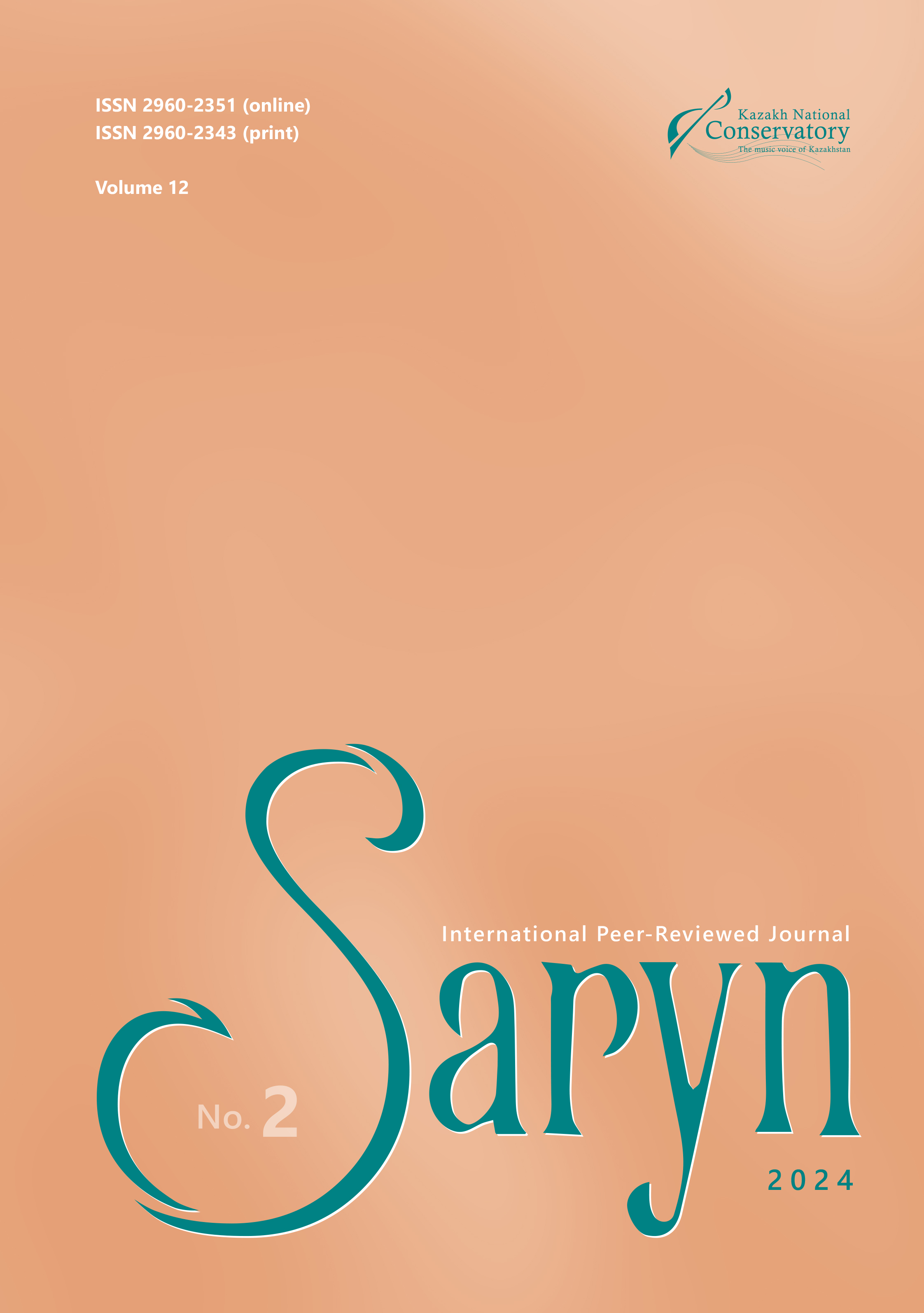Article information
Article publication date
2024-05-24
Article Page
17–39
Chapter
Arts & Humanities
License
Abstract
In Northern California, there are Iranian Americans who play santur, originally a representative instrument of Iranian music. The present article focuses on this community, taking the following issues under consideration:
· What are the aesthetic conceptions of Iranian santurs and their sounds, held by santur-playing Iranian Americans in Northern California?
· What are the social applications of Iranian santurs in Northern California?
Regarding methods, participatory study in the field served as the basis for this work. Partners of the study took part in intensive interviews, and also shared their opinions on various music samples. Literary investigation was also applied, clarifying the necessary historical and social backgrounds. My particular interest in santur led me to conduct this work. An aspect of it lies in underlining of diaspora discourse in ethnomusicology. Although there are strong ties between Iranian santur practitioners in Iran and santur-playing Iranian Americans in Northern California, the latter group has its own distinctive social identity and follows its concerns. Their repertoire goes beyond Iranian music as understood in Iran: it includes folk music and takes influences from neighboring minorities, such as Indian Americans. Regarding social applications of santur in Northern California, this study focuses on two main trends: political motivations, and interest in establishing dialogues with neighboring cultures. In both cases, the role of Radif-inspired improvisation is strongly present. In Northern California, the santur is used by various segments of the society. This practice sometimes goes beyond the Iranian American community. As this study focuses on a specific practice of santur away from the instrument’s original homeland, its outcomes can contribute not only to ethnomusicology, but also to areas of diaspora studies, music history, and such creative directions as music performance and improvisation.
Keywords
santur
Iranian Americans
Nothern California
diaspora discourse in ethnomusicology
improvisation
Radif
References
“A Northern Californian Collaboration of Iranian and Indian Santurs: Tarun Bhattacharya and Roozbeh Nafisi, 2007.” YouTube, uploaded by twothousandand8, youtu.be/_auNmMntgZ4. Accessed 25 April 2024.
“A North-Californian Youth Collaboration of Santur and Tonbak: Keihani, Armin and Azeen Keihani, 2008.” YouTube, uploaded by twothousandand8, youtu.be/ppR1JiZo5lM. Accessed 25 April 2024.
“A North-Californian Contemporary Composition with Santur: Roozbeh Nafisi, 2005.” YouTube, uploaded by twothousandand8, youtu.be/rtfb8MqXoU0. Accessed 25 April 2024.
“A Rare Video: Ostad Reza Varzandeh’s Santur Playing with Amir Nasser Eftetah on Tonbak and Hasan Nahid on Ney at a Concert of Ahdieh’s.” YouTube, Iranian National TV, 1970’s. Undated. Uploaded 2014, youtu.be/biUzLRKLWe8. Accessed 25 April 2024.
‘Anonymous’. Skype interview by Author (Vienna–Rancho Cordova). 06 September 2020. Private Archive.
Bashash, Saeid. Skype interview by Author (Vienna–San Jose). 19 August 2020. Private Archive.
Basmenji, Kaveh. Tehran Blues: Youth Culture in Iran. London, Saqi Books, 2013.
Farhat, Hormoz. The Dastgah Concept in Persian Music. Cambridge, Cambridge University Press, 2004.
Foltz, Richard. Iran in World History. Oxford, Oxford University Press, 2016.
“Improvisation and Talk: Pesheng Kamkar, 2018.” YouTube, uploaded by Santur Center, youtu.be/vboL8y_nm4Y. Accessed 25 April 2024.
Khiabani, Gholam. “The Iranian Press, State, and Civil Society.” Media, Culture and Society in Iran: Living with Globalization and the Islamic State, edited by Mehdi Semati. London & NY: Routledge, pp. 17–36.
Khomeini, Ruhollah. “Sahifa Imam.” [“Divine and Political Will.”] Complete Works of Khomeini’s. Tehran, Institute for the Compilation and Publication of Imam Khomeini’s Works, 2010. (In Farsi)
Larsen, Reif. “Diasporas.” Virginia Quarterly Review, vol. 90, no. 1, 2014, pp. 26–27, www.muse.jhu.edu/article/543229. Accessed 24 April 2024.
Minooei, Faraz. Skype Interview by Author (Vienna–San Jose). 13 June 2020. Private Archive.
Movahed, Maryam, and Gholam Hossein Mohammadi Zadeh. “A Survey about Cultural Relation Joints between Iran and Austria to Design House of Culture.” International Journal of Architecture, Arts and Applications, vol. 3, no. 3, 2017, pp. 31–37. DOI: 10.11648/j.ijaaa.20170303.11.
Payvar, Faramarz. Radife dowreye ebtedayeeye santoor [Elementary Courses of Santur]. Mahoor Institute of Culture and Art, 2015. (In Farsi)
Payvar, Faramarz. “Bayat-e Tork.” [“Bayat-e Tork Mode.”] Vocal Performances of Ostad Mahmoud Karimi. CD Jacket, edited by Mahoor. Mahoor Institute of Culture and Art, pp. 1–2. (In Farsi)
Rahimieh, Nasrin. Iranian Culture: Representation and Identity. London & NY: Routledge, 2016.
Raji, Sanaz. “The Iranian Diaspora in the West.” Diasporas: Concepts, Intersections, Identities, edited by Kim Knott & Sean McLoughlin. London, Zed Books, 2010, pp. 193–197. DOI: 10.5040/9781350219595.ch-033.
Saremi, Mansur. “Bayat-e Isfahan.” [“Bayat-e Isfahan Mode.”] A Century of Santur: Contemporary Performance Styles. CD Jacket, edited by Majid Kiani. Mahoor Institute of Culture and Art, pp. 1–2. (In Farsi)
Siamdoust, Nahid. “Neither ‘Islamic’ nor a ‘Republic’: Discourses in Music.” Cultural Revolution in Iran: Contemporary Popular Culture in the Islamic Republic, edited by Annabelle Sreberny & Massoumeh Torfeh. London and New York: I. B. Tauris, pp. 151–187.
Slobin, Mark. “Music in Diaspora: The View from Euro-America.” Diaspora: A Journal of Transnational Studies, vol. 3, no. 3, 1994, pp. 243–251. DOI: 10.1353/dsp.1994.0012.
Solomon, Thomas. “Theorizing Diaspora and Music.” Lidé města, vol. 17, no. 2, 2015, pp. 201–219. DOI: 10.14712/12128112.3399.
Tsubakihara, Atsuko. “Putting ‘Tehrangeles’ on the Map: A Consideration of Space and Place for Migrants.” Bulletin of the Osaka National Museum of Ethnology, vol. 37, no. 3, 2013, pp. 331–357. DOI: 10.15021/00003846.
Whitlock, Gillian. “From Tehran to Tehrangeles: The Generic Fix of Iranian Exilic Memoirs.” ARIEL: A Review of International English Literature, vol. 39, no. 1–2, 2008, pp 7–27.




